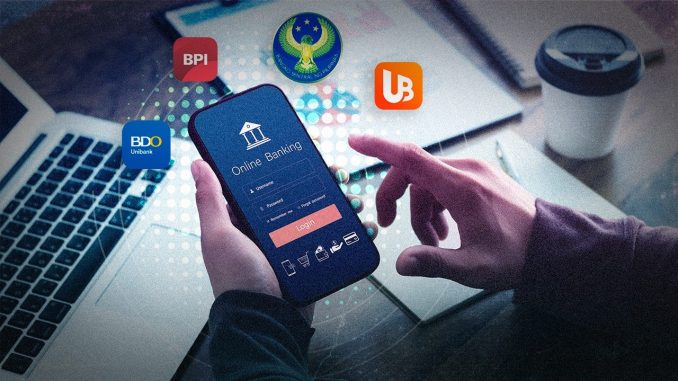
The financial landscape has undergone a dramatic transformation in recent years, largely driven by technological advancements that have given rise to an entirely new breed of institutions: digital-only banks and financial service providers, often referred to as “neobanks.” These entities operate without the traditional brick-and-mortar branches, conducting all their business through online platforms, mobile applications, and digital channels. While offering a compelling vision of banking convenience and efficiency, they also present a unique set of advantages and disadvantages that consumers and businesses must carefully consider.
One of the most compelling “pros” of digital-only banks is their unparalleled convenience and accessibility. Imagine managing your finances, opening an account, transferring funds, or even applying for a loan from the comfort of your home, at any time of day or night. This 24/7 access, coupled with intuitive mobile apps and user-friendly web interfaces, eliminates the need for physical visits to a branch, waiting in queues, or adhering to restrictive banking hours. For busy individuals, frequent travelers, or those in remote areas with limited access to traditional banks, this level of flexibility is a significant draw. The ability to receive instant notifications for transactions, monitor spending habits through integrated budgeting tools, and access real-time balance updates empowers users with greater control over their financial lives.
Another substantial advantage often touted by digital-only banks is their typically lower fees and more competitive interest rates. Operating without the extensive overhead costs associated with maintaining a vast network of physical branches, these institutions can pass on considerable savings to their customers. This often translates to zero monthly maintenance fees for checking and savings accounts, lower international transaction fees, and higher annual percentage yields (APYs) on deposits compared to their traditional counterparts. For consumers looking to maximize their savings and minimize banking costs, this financial benefit can be highly attractive, allowing their money to work harder for them. Many also offer attractive perks like early access to paychecks or fee-free ATM networks, further sweetening the deal.
However, the very characteristics that make digital-only banks so appealing can also contribute to their drawbacks. The most prominent “con” is the inherent lack of a physical presence. For individuals who prefer face-to-face interaction for complex financial consultations, or who rely on a physical branch for services like depositing large amounts of cash, notarizing documents, or resolving intricate issues, the absence of a brick-and-mortar location can be a significant impediment. While many digital banks offer robust online and phone customer support, some users may find the digital-only interaction impersonal or insufficient for their needs, particularly during stressful financial situations. Imagine trying to resolve a suspicious transaction solely through a chatbot or email, without the reassurance of speaking directly with a bank representative in person.
Security, while a top priority for all financial institutions, also presents a nuanced challenge for digital-only banks. While these banks invest heavily in cutting-edge cybersecurity measures, including advanced encryption, multi-factor authentication, and biometric verification, the fact that all transactions and data exchanges occur online means they can be perceived as more vulnerable to cyber threats. Phishing scams, malware, and identity theft remain persistent concerns in the digital realm. Although traditional banks also face these threats, the physical presence often provides an additional layer of psychological security for some customers. Users of digital-only services must be highly vigilant about their online security practices, employing strong passwords, monitoring account activity diligently, and being wary of suspicious communications.
Furthermore, the range of financial products and services offered by digital-only banks can sometimes be more limited compared to traditional, full-service institutions. While they excel at basic banking needs like checking, savings, and payments, many neobanks may not offer a comprehensive suite of products such as mortgages, complex business loans, investment brokerage services, or specialized advisory services. For individuals or businesses with diverse and evolving financial requirements, relying solely on a digital-only provider might necessitate maintaining accounts with multiple institutions, potentially fragmenting their financial management.
Finally, the reliance on technology also introduces the potential for technical glitches or downtime. While most digital banks boast high uptime, a system outage, app malfunction, or even a personal internet connectivity issue can temporarily render banking services inaccessible, which can be particularly problematic during urgent financial needs. For less tech-savvy individuals, navigating complex apps or troubleshooting digital issues can also present a steep learning curve, creating a barrier to adoption.
In conclusion, digital-only banks and financial services are undoubtedly reshaping the future of banking, offering unprecedented convenience, cost savings, and personalized experiences. They cater exceptionally well to a digitally native generation and those who prioritize efficiency and lower fees. However, their branchless model and heavy reliance on technology also come with inherent trade-offs, particularly regarding in-person service, perceived security, and the breadth of financial offerings. As the financial industry continues to evolve, many consumers and businesses may find themselves adopting a hybrid approach, leveraging the strengths of both digital-only and traditional banks to create a financial ecosystem that best suits their individual preferences and needs.